The Samsung 960 Pro (2TB) SSD Review
by Billy Tallis on October 18, 2016 10:00 AM ESTRandom Read Performance
The random read test requests 4kB blocks and tests queue depths ranging from 1 to 32. The queue depth is doubled every three minutes, for a total test duration of 18 minutes. The test spans the entire drive, which is filled before the test starts. The primary score we report is an average of performances at queue depths 1, 2 and 4, as client usage typically consists mostly of low queue depth operations.
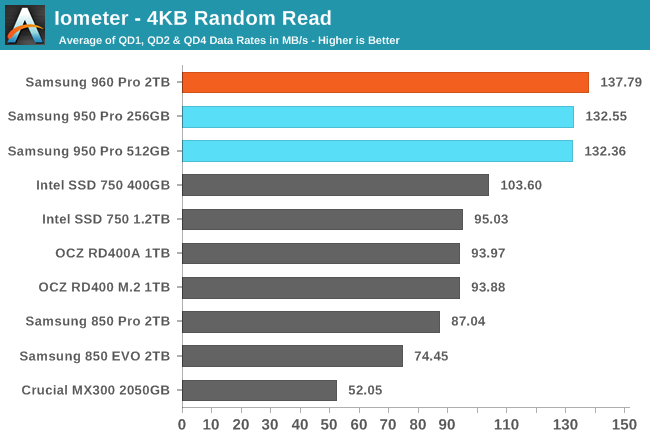
The Samsung 960 Pro slightly widens what was already a commanding lead in low queue depth random read performance.
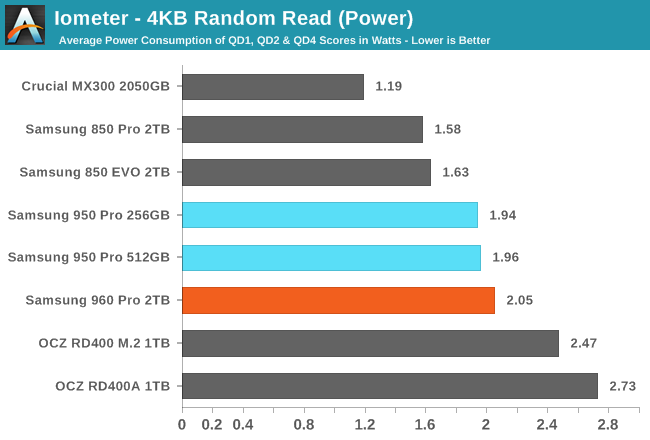
The 960 Pro's power usage is higher in proportion to its increased performance. Only a handful of the smallest and lowest-power SATA SSDs are more efficient, but at half the overall performance.
 |
|||||||||
While they are unmatched at lower queue depths, both the 960 Pro and the 950 Pro under-perform expectations at QD32. This hardly matters for a consumer SSD.
Random Write Performance
The random write test writes 4kB blocks and tests queue depths ranging from 1 to 32. The queue depth is doubled every three minutes, for a total test duration of 18 minutes. The test is limited to a 16GB portion of the drive, and the drive is empty save for the 16GB test file. The primary score we report is an average of performances at queue depths 1, 2 and 4, as client usage typically consists mostly of low queue depth operations.
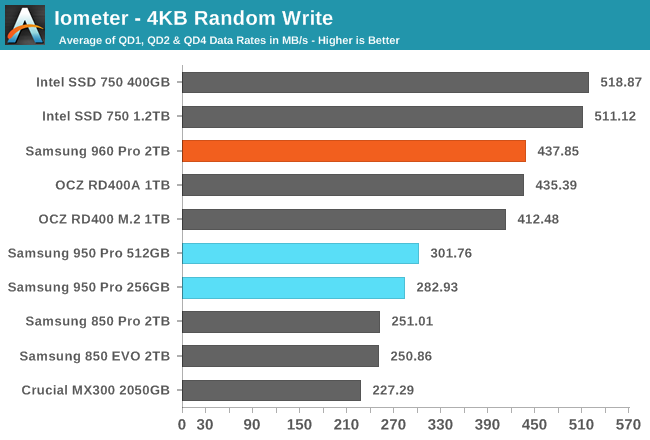
The 960 Pro's random write performance is a big improvement over the 950 Pro, catching up with the OCZ RD400 but still well behind the Intel 750.
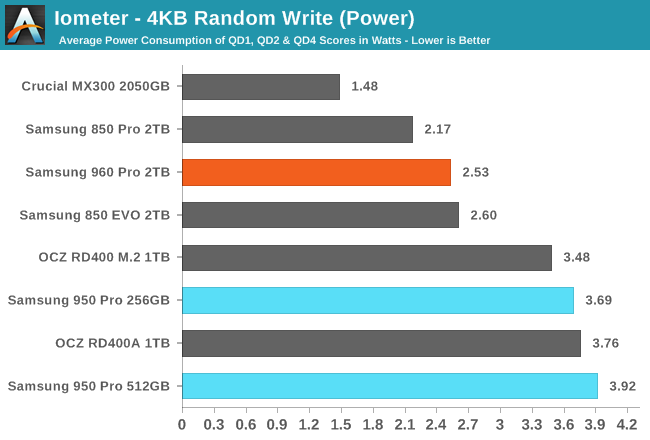
In addition to greatly improving random write performance over the 950 Pro, the 960 Pro greatly improves power consumption and jumps to the top of the efficiency ranking, just ahead of the Crucial MX300.
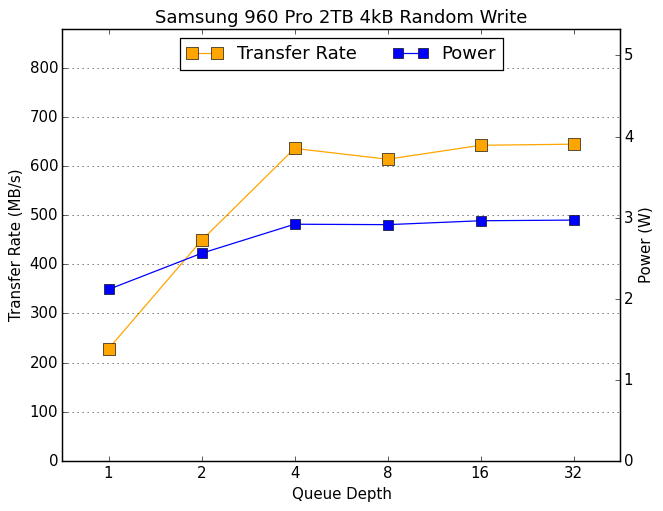 |
|||||||||
Where thermal throttling prevented the 950 Pro from improving past QD2, the 960 Pro scales up to QD4 and plateaus at that level for the second half of the test, with somewhat steadier performance than the OCZ RD400 that draws more power and thus has more thermal throttling to contend with. The Intel 750 with its massive heatsink entirely avoids thermal throttling.










72 Comments
View All Comments
hansmuff - Wednesday, March 15, 2017 - link
I have to try the 2.0 driver; thanks for your comment! I only installed the 2.1 driver for my 960 pro and it was faster, but DPC went to all shit.WarVance - Friday, October 27, 2017 - link
"...a more thorough comparison of how NVMe drivers and operating system versions affect performance will be coming in the future."Has this been published? I'm very interested in just such an analysis. I recently obtained an Intel 750 400GB card and want to know all about the ideal driver setup under Windows 10 and possibly 7.